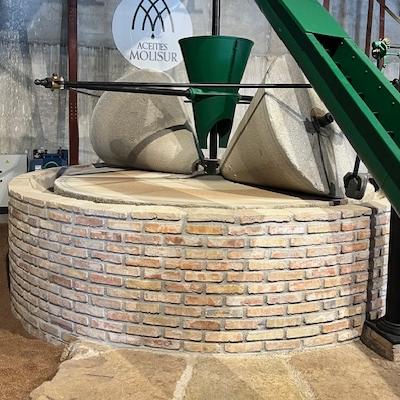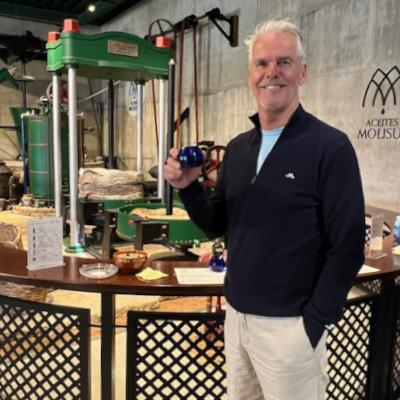Tour and Olive Oil Tasting at Aceites Molisur in Alhaurín el Grande
In January 2025, we finally found the time to visit the olive oil factory Aceites Molisur in Alhaurín el Grande, just a 25-minute drive from Casa Mijas. Through their website (https://aceitesmolisur.es/en/) we booked tickets for a guided tour. Since it was January and therefore low season, our group consisted of only four people, making the experience even more personal and enjoyable.
A Fascinating Introduction to Olive Trees
Our tour was led by an enthusiastic guide who first took us to see the different types of olive trees. It turns out that an olive is not just an olive—there are actually over 2,600 different varieties! An impressive fact that immediately made us realize how diverse this fruit really is.
 Historic Olive Oil Mill: A Journey Back in Time
Historic Olive Oil Mill: A Journey Back in Time
Next, we visited the historic olive oil mill, a place with more than 100 years of history. It was fascinating to see how olive oil used to be produced using massive rotating stones that crushed the olives. The machine is still operational, giving us a real sense of the traditional process. This provided a beautiful contrast with the modern techniques we would learn about later.
Olive Oil Tasting: A Flavorful Surprise
After the mill tour, we arrived at one of the highlights: the olive oil tasting. While you might assume that all olive oils taste the same, we quickly discovered huge differences. We sampled three different types of extra virgin olive oil and learned how to distinguish the various aromas. It was surprising how delicious pure, high-quality olive oil is, especially when paired with a small piece of bread.
The Modern Factory and the Importance of Freshness
In addition to the historic mill, Aceites Molisur also has a modern factory, where small-scale farmers can have their olives pressed into olive oil. Our guide explained that for these farmers, it is always an exciting moment to see how many liters of oil they will ultimately produce. The process is strictly regulated: the faster the olives are processed after harvest, the higher the quality of the oil. This highlighted the crucial role of freshness in olive oil production.
A Surprising Fact About Olives
During the tour, we learned something unexpected: the best olives for olive oil production are actually the unripe, green olives. Black olives, which are commonly eaten, stay on the tree longer and are not used for the highest-quality olive oil. A fun and educational insight!
High-Quality Olive Oil to Take Home
After this informative and delicious experience, we couldn’t resist visiting the shop. We bought a bottle of extra virgin, cold-pressed olive oil. One thing we now know for sure: cold-pressed olive oil is the king of olive oils! For cold dishes, always choose a cold-pressed variety, while for cooking, regular olive oil is a better option.
Our visit to Aceites Molisur was a fantastic experience full of new insights and delicious flavors. A must-visit for anyone who wants to learn more about olive oil and its traditional and modern production methods!



